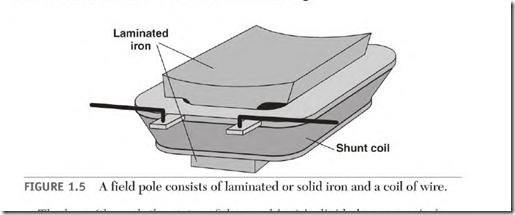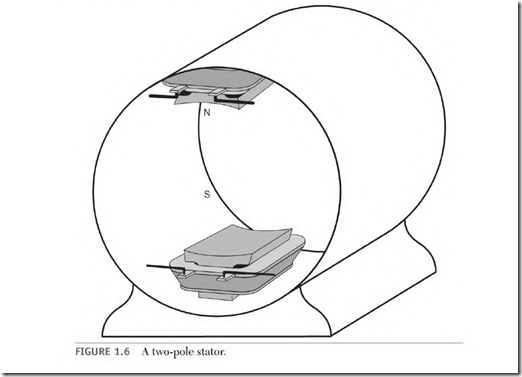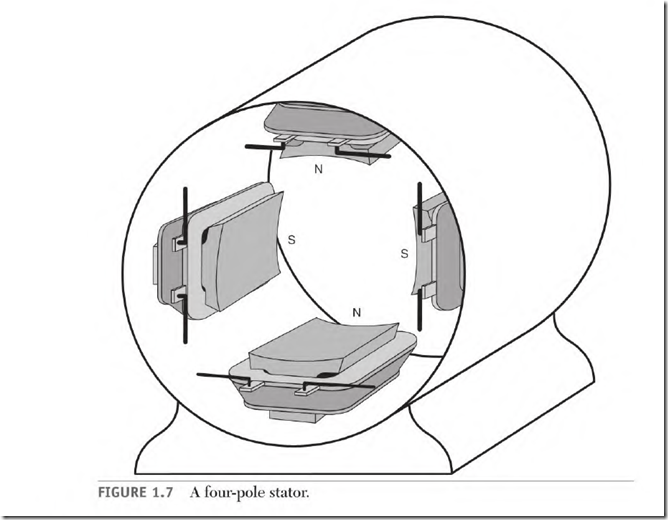The Bar Magnet
The bar magnet illustrated in Fig. 1.2 shows the invisible lines of force (flux) going out one pole and completing a magnetic circuit to the other pole. Lines of force will go through air, insulation, and nonmagnetic materials.
The bar magnet is at full magnetic strength when its molecules are in alignment, as seen in Fig. 1.3.
The Electromagnet
A piece of iron with a coil of wire wound around it makes a basic electromagnet (Fig. 1.4). Magnetic strength is controlled in an electromagnet by raising and lowering the amperes. Reversing the current flow will reverse its polarity.
The Magnetic Pole
A pole in the stator of a DC machine is a coil of wire wound around a piece of iron (called a pole shoe or pole iron), as shown in Fig. 1.5.
A pole is equal to 180 electrical degrees. One north pole and one south pole equal 360 electrical degrees. There are always pairs of poles.
The bore (through the stator of the machine) is divided very precisely by the number of poles. The electrical degrees are equal to the mechanical degrees in a two-pole motor (as seen in Fig. 1.6). Half of the mechanical circle will contain 360 electrical degrees in a four-pole motor (Fig. 1.7).



